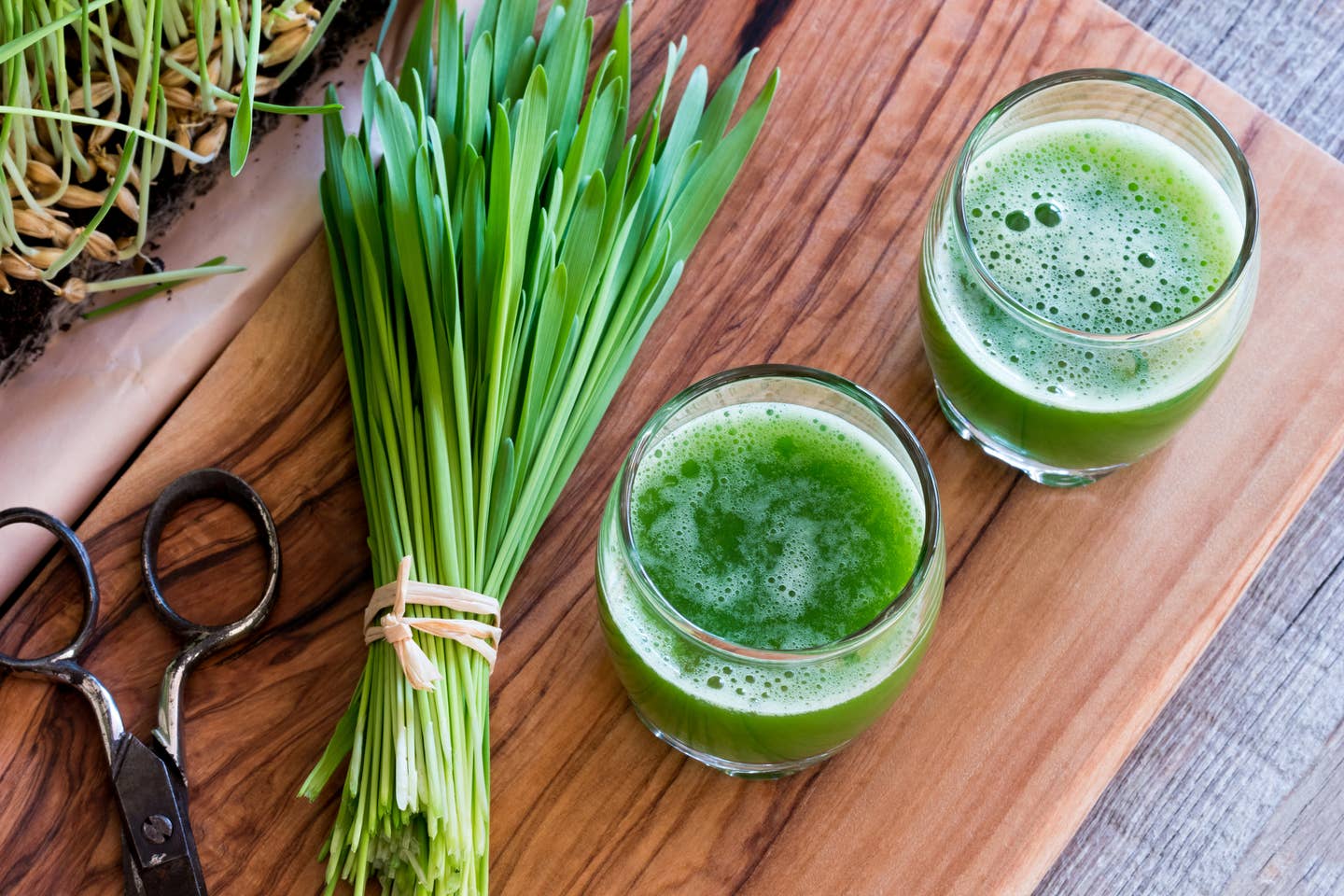
For Lower Cholesterol and to Have More Energy, Try Wheatgrass, Says This RD
If you’ve ever had a bright green juice or smoothie, there’s a strong chance it contained wheatgrass. This popular smoothie booster comes from the leaves of the wheat plant, also called Triticum aestivum. This superfood has gained popularity as it boasts incredible health benefits with a mild taste, and is high in many vitamins and minerals, including vitamin A, C, and E. Now people are adding it to everything from juice shots to hummus, so should you try wheatgrass? Here's what to know.
What is Wheatgrass?
Wheatgrass is the young grass of the wheat plant. It looks like lawn trimmings and has a relatively mild, neutral taste. This plant was used in many traditional medicine systems over 5,000 years ago to treat constipation and ease joint pain. Similar to most plants, wheatgrass contains chlorophyll, amino acids, and many other nutrients. It’s also a very popular garden plant as it takes only six to eight days to reach garden size.
The Health Benefits of Wheatgrass
In an exclusive interview with The Beet, Supriya Lal, RD, a registered dietitian explained the health benefits of wheatgrass and why it's a popular superfood. Here’s why you should give it a try:
1. Wheatgrass May Prevent Spikes in Blood Sugar Levels
Wheatgrass contains fiber, which helps slow the absorption of carbohydrates in your intestine. It’s key to balance your blood sugar levels as too many spikes over time can lead to chronic diseases like type 2 diabetes. A study found that the consumption of fiber resulted in improved blood sugar and triglyceride levels. “While more research is needed to suggest that wheatgrass can prevent spikes in blood sugar levels, I would cautiously tell those who enjoy the taste of it to include it in their diet,” Lal says.
2. Wheatgrass Can Help Reduce Cholesterol
Studies conducted on animals have shown that the consumption of wheatgrass has led to decreased “bad” LDL cholesterol and triglycerides. One study found that the effect of wheatgrass was similar to that of atorvastatin, a prescription drug given to reduce cholesterol. However, more research is needed to identify how wheatgrass may affect cholesterol levels in humans.
3. Wheatgrass Helps to Decrease Inflammation
“Wheatgrass is filled with vitamins and antioxidants, which can support our bodily functions. However, it’s not a complete replacement to a diet rich in fruits and vegetables,” Lal says. Antioxidants prevent damage to cells caused by free radicals. Excess free radicals can lead to greater inflammation, putting our bodies at increased risk for many chronic diseases. While more research is needed in the space to identify the anti-inflammatory effects of wheatgrass, many individuals add it to their diet during cold and flu season.
4. Wheatgrass Has Been Shown to Improve Cognition
Wheatgrass boasts a high amount of vitamin K, a nutrient essential for brain and bone health. Studies have shown that vitamin K may improve memory and prevent Alzheimer’s. While the research isn’t exactly clear, one review found that it can enhance mental sharpness and cognition. “In theory, wheatgrass’ components, namely its fiber and vitamin content, can support brain health,” Lal says.
How To Use Wheatgrass and Where To Buy It
Wheatgrass is widely available as a powder, supplement, or plant. This superfood can be blended into smoothies, juiced, or minced into your favorite salads. Wheatgrass should not be treated as a meal replacement, Lal says, but it can be an addition to your healthy diet. Speak to a physician or dietitian before taking wheatgrass on a regular basis since it does have some side effects like stomach aches or nausea.
You can find wheatgrass at most health food stores and organic supermarkets. Try wheatgrass powder from Navitas or a fresh wheatgrass juice from Clean Juice to load up on the benefits of this incredible superfood.
More From The Beet






